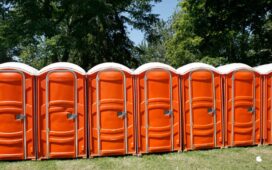Basement water problems can lead to significant damage and costly repairs if not addressed promptly. Effective drainage solutions are crucial in preventing water from seeping into your basement and causing issues like mold, mildew, and structural damage. Here’s how you can overcome basement water problems with Ibex drainage solutions.
Understanding the Causes of Basement Water Problems
Water can enter your basement through various means, including:
- Surface Water: This includes rainwater or melting snow that accumulates around your home’s foundation due to improper grading or clogged gutters.
- Subsurface Groundwater: Hydrostatic pressure from groundwater can push water through cracks in the foundation.
- Condensation: Warm, humid air coming into contact with cool basement surfaces can lead to condensation and moisture buildup.
Identifying the source of the water problem is the first step in determining the most effective drainage solution.
Effective Drainage Solutions
1. Exterior Drainage Systems
French Drains: A French drain is a trench filled with gravel and a perforated pipe designed to redirect water away from your foundation. It collects and channels water to a designated discharge point, such as a storm drain or dry well.
Waterproofing Membranes: These are applied to the exterior foundation walls to create a waterproof barrier that prevents water from entering the basement. Polymer-based waterproofing products are highly effective and long-lasting.
Exterior Sump Pump: Installed outside the foundation, this type of sump pump helps collect and discharge water away from your basement.
Grading: Proper grading around your home ensures that the land slopes away from the foundation, guiding rainwater and snowmelt to drain away from the house rather than pooling against the foundation walls.
2. Interior Drainage Systems
Interior French Drains: Similar to their exterior counterparts, interior French drains are installed beneath the basement floor to collect and channel water toward a sump pump.
Sump Pump: A sump pump collects water from French drains or other channels and pumps it away from the basement to prevent flooding.
Dehumidifiers: Dehumidifiers help control moisture levels by removing excess humidity from the air, reducing condensation and preventing mold growth.
Interior Waterproofing Membranes: These are applied to the interior surface of basement walls to create a moisture barrier, preventing water vapor from entering the basement.
3. Foundation Crack Injections
For smaller cracks that do not pose a structural threat, foundation crack injections can be an effective solution. This process involves injecting a liquid polyurethane or epoxy into the cracks, which then hardens and creates a waterproof barrier.
Maintenance and Prevention
Once your drainage system is in place, regular maintenance is essential to ensure its effectiveness. This includes:
- Cleaning Gutters: Regularly clean and maintain gutters to prevent water from overflowing and accumulating around the foundation.
- Inspecting Drains: Periodically inspect floor drains, French drains, and sump pumps to ensure they are functioning correctly.
- Monitoring for Cracks: Keep an eye out for new cracks in the foundation and address them promptly with appropriate repairs.
Conclusion
Effective drainage solutions are vital in preventing basement water problems and protecting your home’s structural integrity. By implementing a combination of exterior and interior drainage systems, along with regular maintenance, you can keep your basement dry and safe. For professional assistance, consider Ibex drainage solutions to ensure your home is well-protected against water damage.



